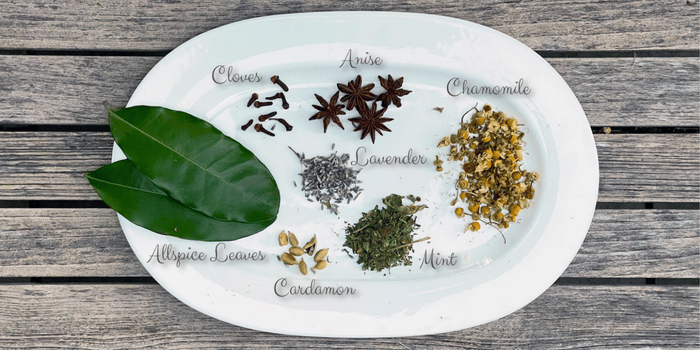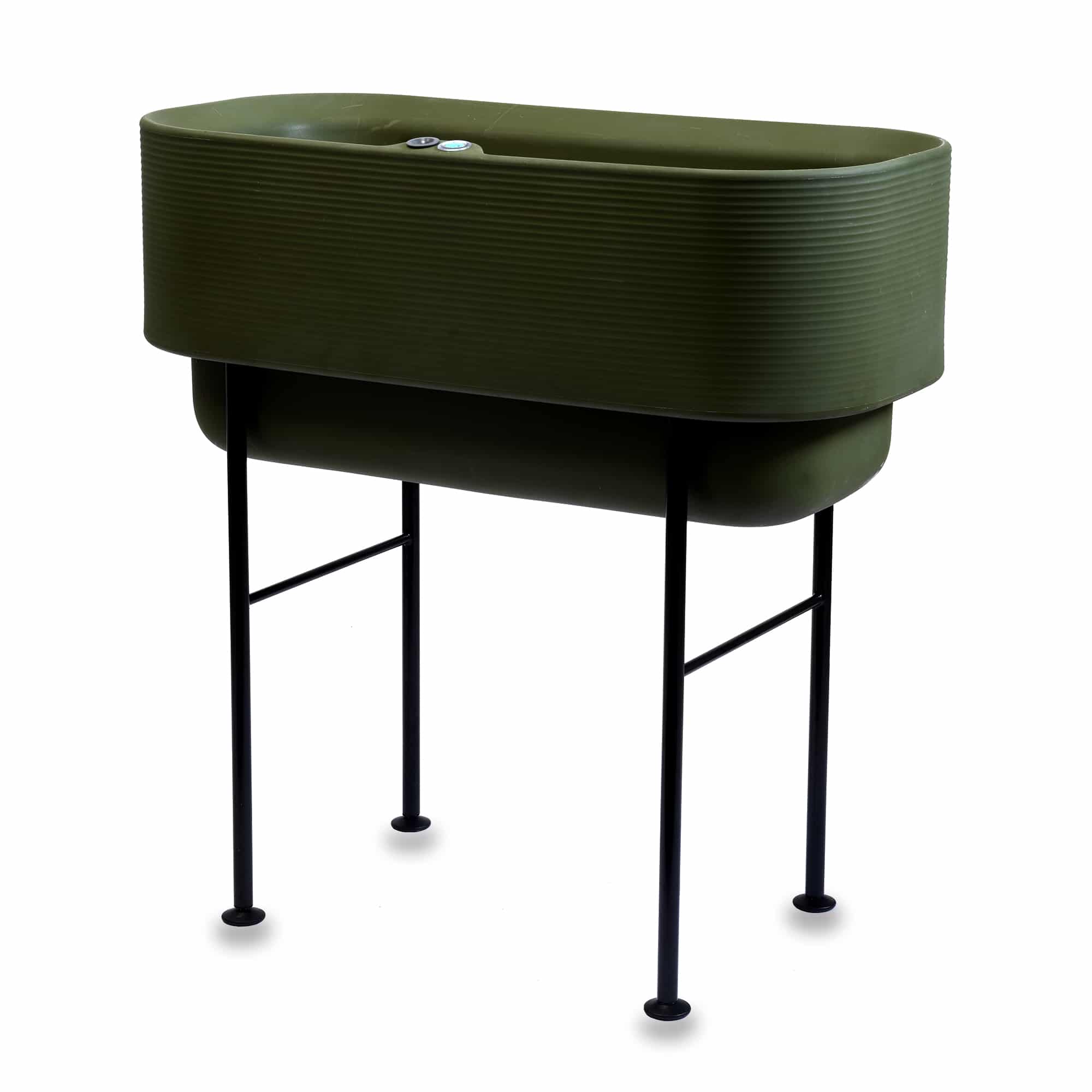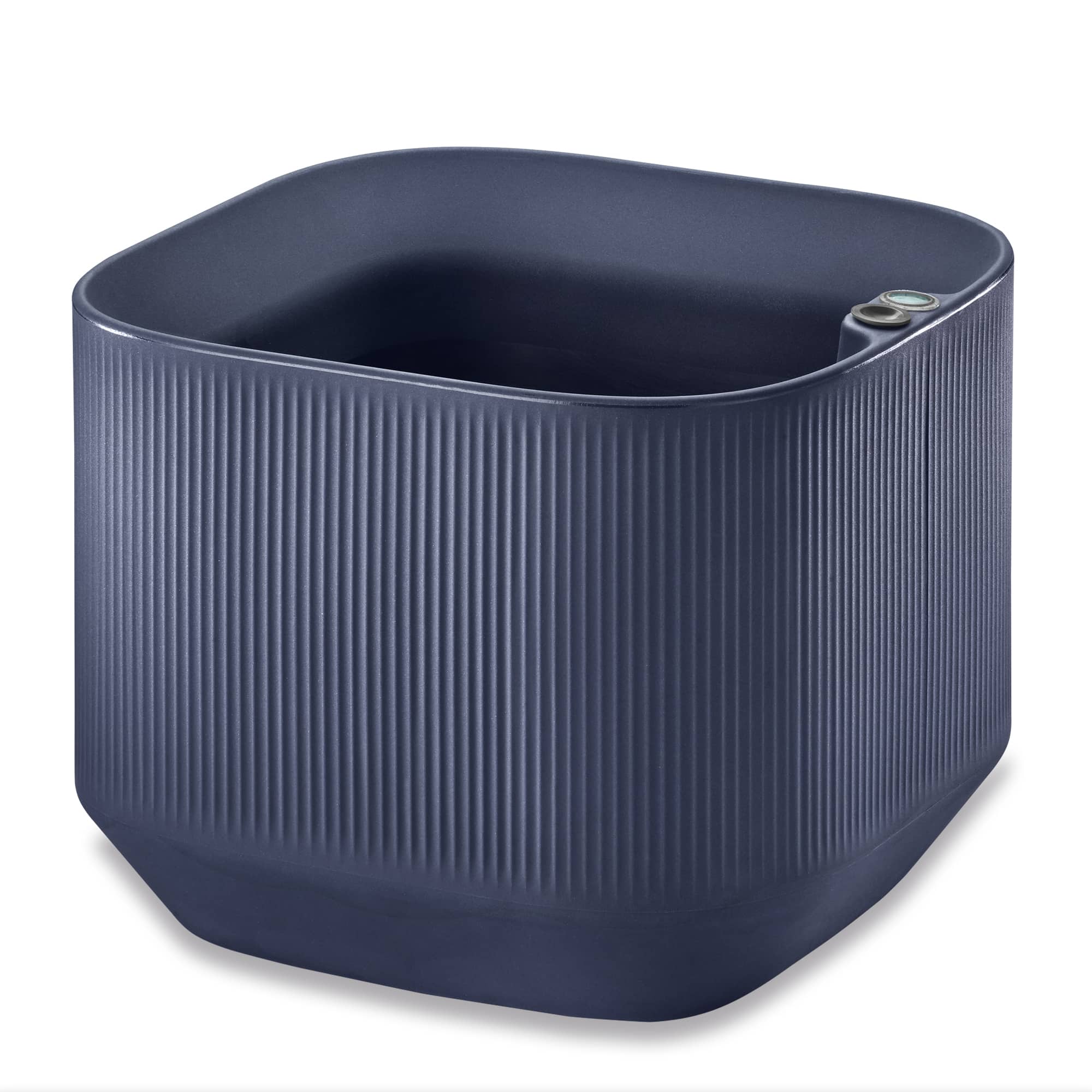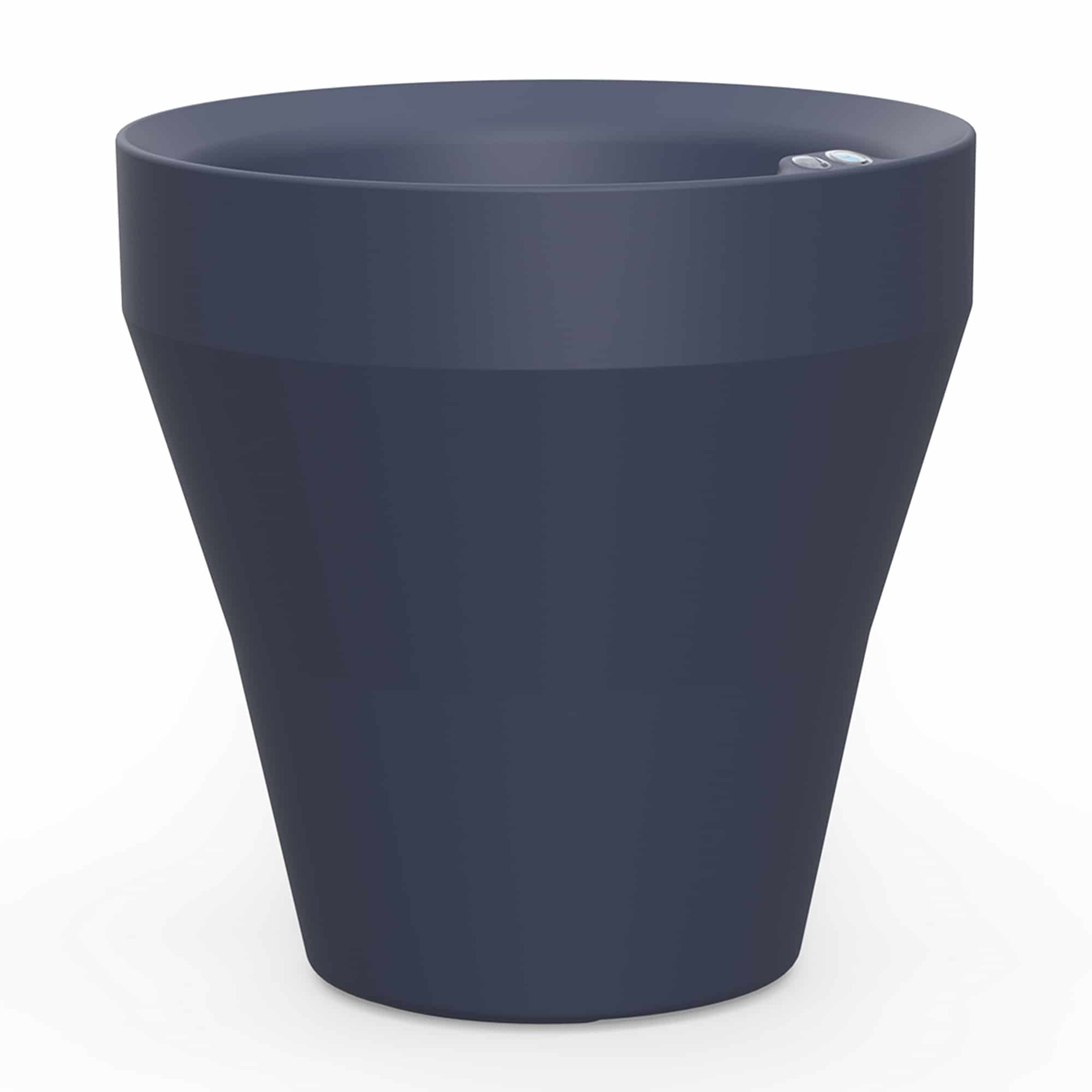Warm your heart, mind and stomach with a hot cup of herbal tea
As the days get cooler and we start to celebrate with family and friends, warm herbal teas can always bring back childhood memories, and perhaps one or more from past generations. Growing up in the mountains of South America, herbal teas are a staple of the diet. Perhaps because of the altitude they are often used for digestive purposes and drank after meals. My kids are now growing up in the Florida coastline and those medicinal properties might not be as important, but herbal teas have been a great way to avoid caffeinated drinks, and/or sugary drinks. They are so used to it now they beg for it. Here are some tips. I don’t think there is a right or wrong way to make an herbal tea so enjoy creating your own concoction.
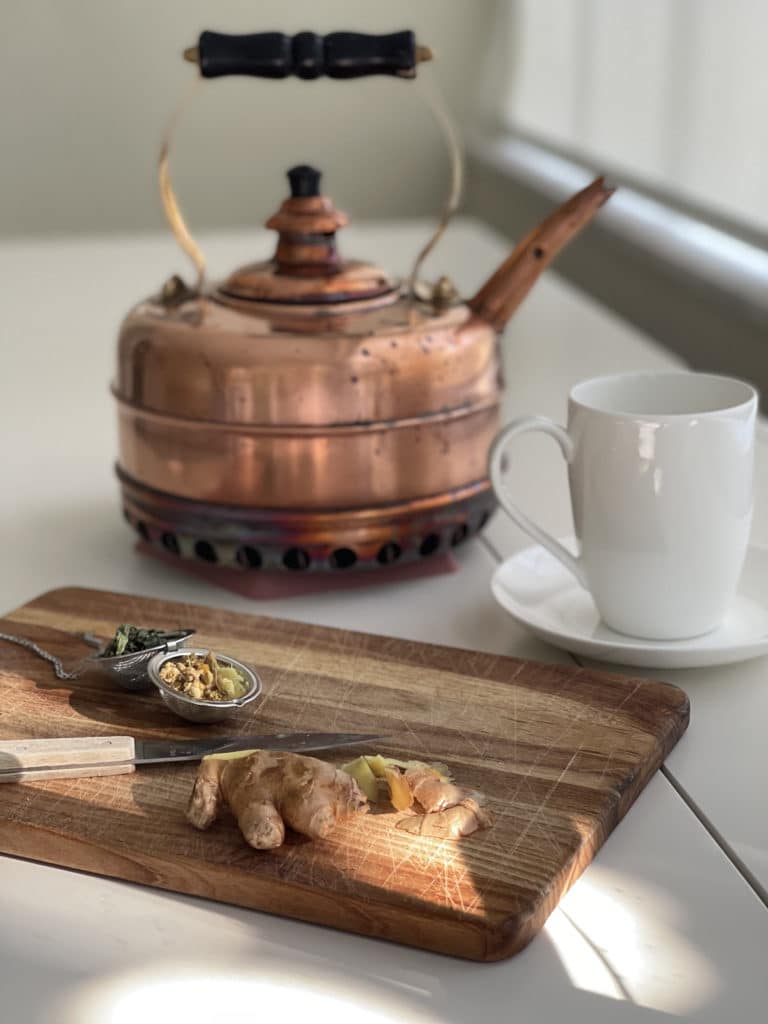
Make your own tea during this cozy season.
Growing and Harvesting Herbs for Tea
You can grow herbs indoors near a windowsill or outdoors most seasons. Some herbs thrive better than others at a certain time of the year; you want to find out what works in your area. Either way, plants always do better when you trim them down and give them a good haircut so they can grow fuller. Some suggestions from our in-house expert Barbara Wise are as follows:
- It is best to harvest in the early morning to get the fullest flavor.
- Prune off flowers to encourage branching. The exception to that would be when you want it to flower to save the seeds.
- Many herbs such as basil, mint, and thyme can easily be propagated when you prune. Take the cuttings and pull off 2-3 of the leaves near the cut end and stick them in a clear vase of water for a few weeks. Once you get a healthy set of white roots you can pot up a few more plants to share.
At the end of a season you may have too much of a great thing and not enough recipes to involve your fresh herbs. This is the perfect time to harvest and dry all your excess herbs.
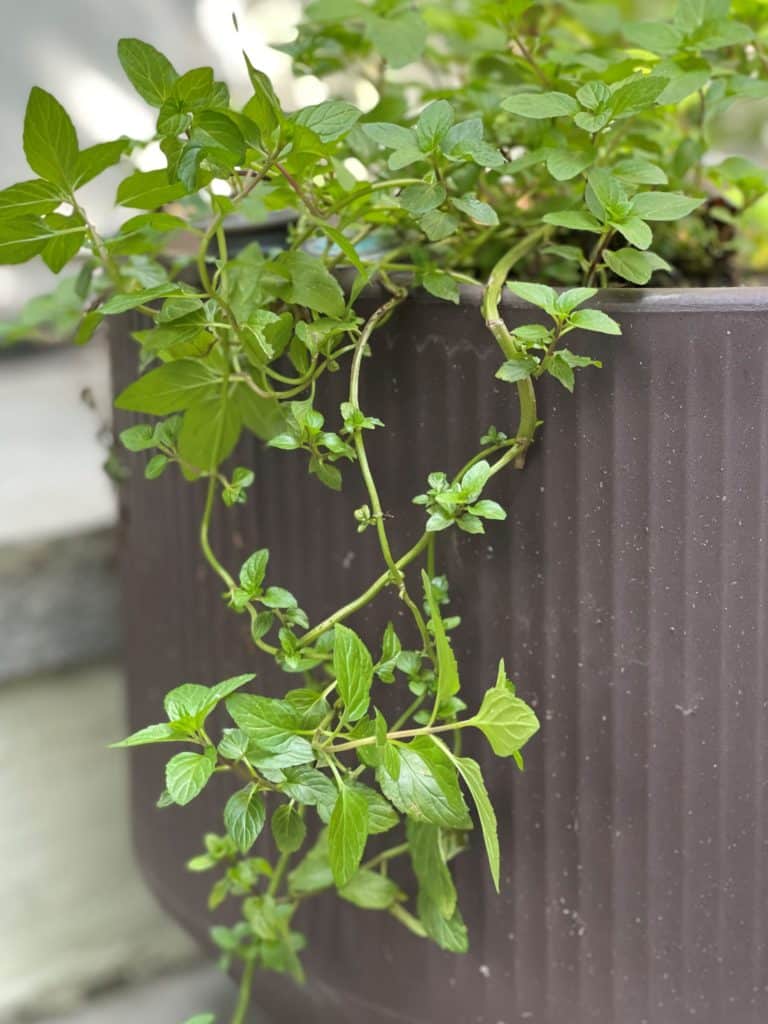
Harvest your mint leaves in the morning for the best flavor.
Drying Herbs for Tea
Ideally one can dry herbs outside in the sun. Just place them on trays outdoors in the sunlight and they will slowly dry out. Unfortunately, in very humid conditions this doesn’t work so well. Second best would be to use a dehydrator. If you cannot do either, the oven does work at your lowest temperature possible. This can be done on baking trays or sheets. Just watch them so that you take them out as soon as they are completely dry; they should be able to crush easily. It does take time depending on the humidity of the plant being dried.
Storing Dry Herbs
Once dry, herbs can easily be removed from their stems if you wish to crush them. Store them in airtight containers to make them last longer. You can tell by their aroma how fresh they are when using them. Overtime you will find aroma and flavor will diminish.
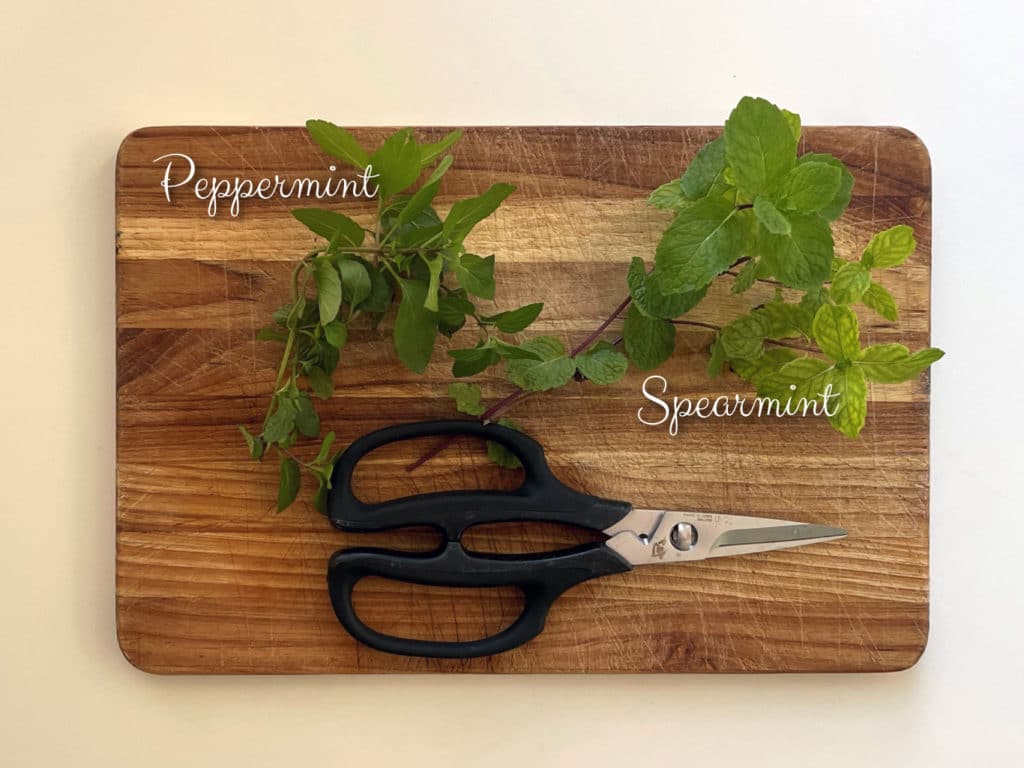
Once your herbs are dry you can remove the stems and store.
Using fresh herbs vs dry herbs for tea
I grew up with fresh herbs from the garden and our teas were always made fresh. The green leaves of mint for example will pigment the water, give it a stronger vibrancy and I believe are simply more flavorful. However, when winter comes along and fresh is not an option dry herbs can work wonderfully as well. The only difference is that the fresh herbs can be thrown directly into the cup to infuse while dry herbs are better in cheese cloth bags or in a metal tea ball.

If your herbs are fresh from the garden, throw them right into to the cup. No need for a tea bag.
What herbs make great teas?
- Chamomile
- Mint
- Peppermint
- Rosemary
- Lemongrass
- Sage
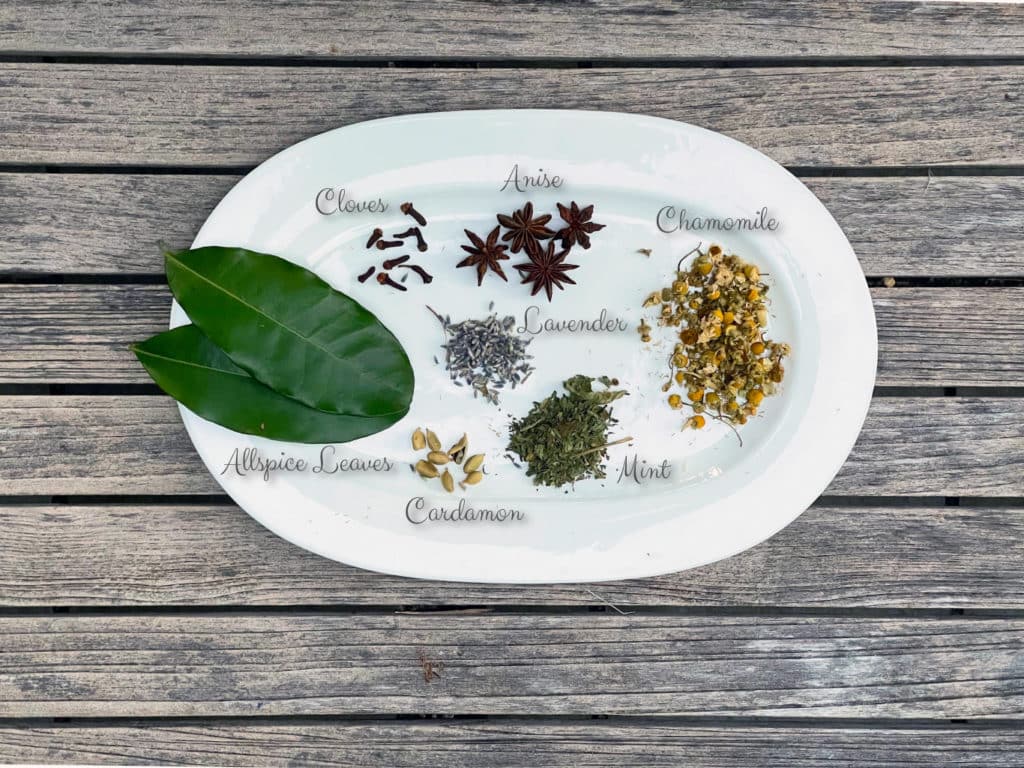
There are a world of herbs to choose from.
Combination Teas that are not just Herbal
In Colombia it is very customary to include spices, and fruit in tea infusions. Some of the ingredients you can work with are: ginger, fresh berries, cloves, star anise, dried edible flowers, edible fruit tree leaves like guava leaves, dried orange or lemon peels. All of these add complexity to traditional herbal teas and combinations can be endless.
What herbs can be medicinal?
Herbs for centuries have been used for medicinal purposes. Apothecaries would offer solutions to many ailments, perhaps some were exaggerated but many were discovered over time based on trial and error. Today even modern-day pharmaceuticals will inspire medicines and use extractions from herbs.
Here are some of the generally known medicinal applications for common garden herbs:
- Mint: Mint is incredibly calming in the stomach and can be helpful to reduce discomfort from overeating, or eating the wrong foods.
- Chamomile: Ready to relax and enjoy your sleep. Chamomile is often described as the calming herb.
- Rosemary: Is said to be great for the mind. Not sure if this is true but if it doesn’t help I do know rosemary the pungent flavor can be very refreshing and works very well in iced teas as well combined with slices of lemon.
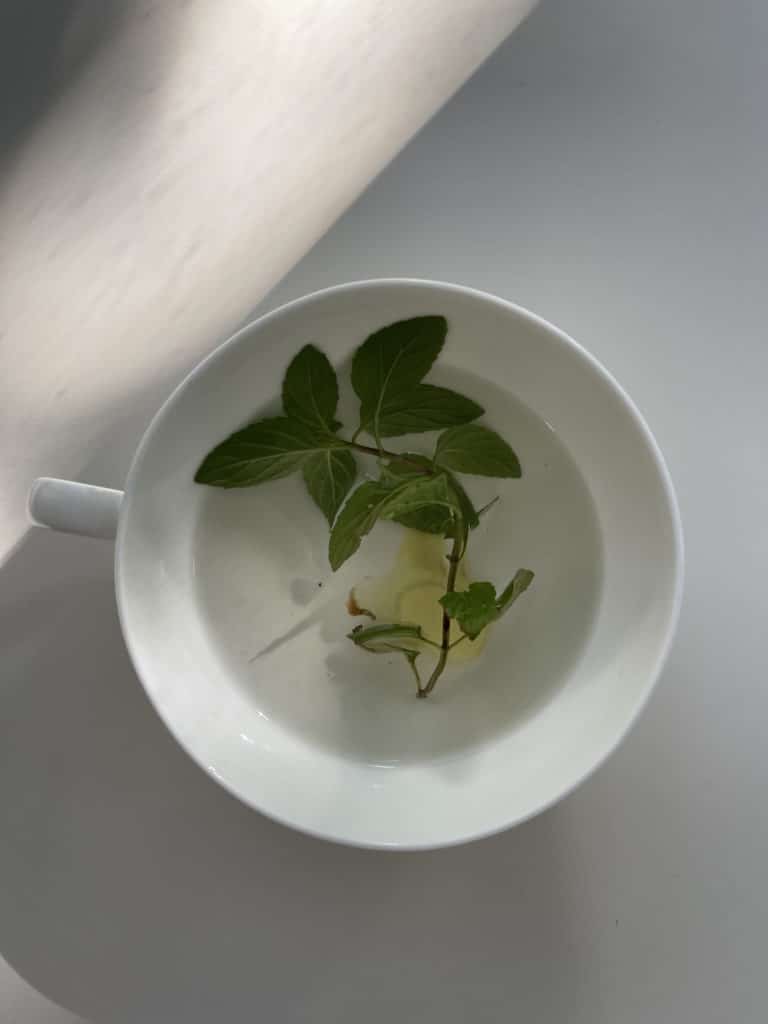
Let the tea work it’s magic. Sip and relax.
